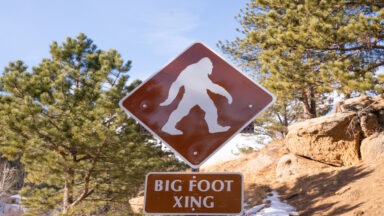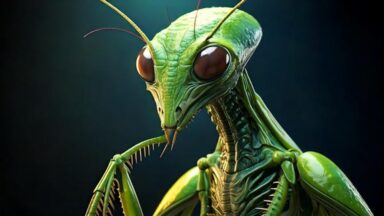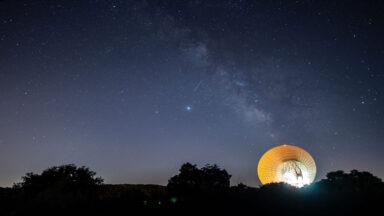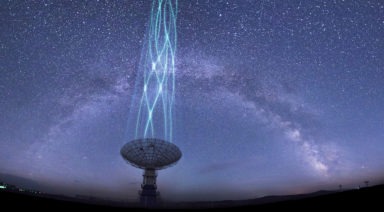Cryptids Proven to be Real Give Us Hope For These 5 Others
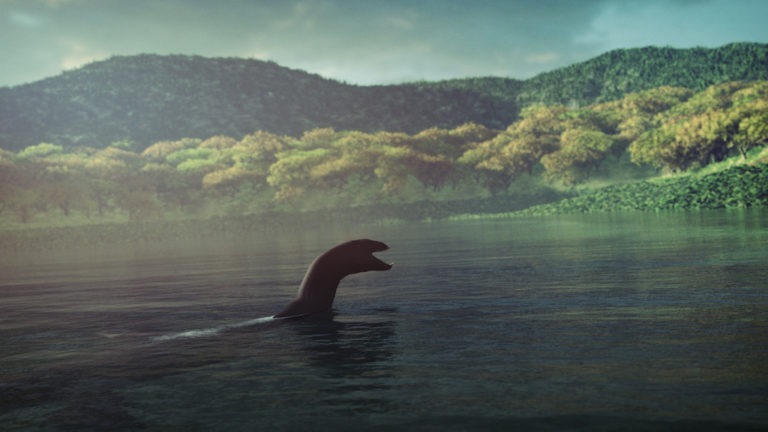
Cryptozoology is derided for pseudoscience and fantastic claims, but when you consider some of the legends that have turned out to be real animals, it lends credibility to other potentially real cryptid creatures. And while the actual beasts are often more believable than the embellished monsters of lore, occasionally they can be pretty bizarre – whether a remnant of the Cretaceous period, a curious hybrid, or an inter-dimensional entity, some of these clandestine faunae are truly plausible.
That’s why we’ve compiled a shortlist of animals once-considered cryptids, that have now been proven real, using their stories as hope to strengthen our faith that the cryptid monsters we know and love may someday prove their existence to us.
But haven’t we discovered nearly every species of animal on Earth, you might ask? Far from it. In 2016 alone, scientists discovered roughly 18,000 new animal species. That’s not to mention that 80 percent of the world’s oceans are entirely unmapped, unobserved and unexplored, according to the National Oceanic and Atmospheric Administration (NOAA). So, who knows how many more could be down there.
Read through the first list of creatures proven to be real, then read the second list and determine whether there is enough evidence for the yet-to-be-proven-cryptids to have a basis in reality. We’ve provided cryptid pictures to help you along the way.
Cryptid Monsters Proven Real
Cryptid monsters are known to terrorize and typically reported by a significant portion of a population, or at least a large enough group to confirm that it is indeed an anomalous creature. In earlier years, these animals were brutes fought by hunters and fishermen on outings and were exaggerated to prove their machismo upon returning home. But eventually, these tales became backed by hard evidence, and today we know them well.
-
The Giant Squid
19th-century Scandinavian whalers spoke of the Kraken; an enormous squid whose appendages were found in the bellies of whales and said to be as thick as a ship mast. Fishermen continued to report attacks by these tentacled monstrosities, to the disbelief of landlubbers back home. But eventually, they returned with specimens or found their carcasses washed ashore.
In 1853, a large squid with a horny beak and large throat washed aground in Denmark, baffling local scientists. Johan Japetus Steenstrup, a professor of zoology from the University of Copenhagen, identified the creature as a giant squid.
Today, the giant squid is a scientifically accepted animal, reaching lengths up to 40 feet long. Their enormity is attributed to something called deep-sea gigantism; a tendency for deep-sea invertebrates to be larger than their shallow-water relatives. But the giant squid isn’t even the biggest mollusk of its kind, that title is reserved for the colossal squid, which reaches up to 46 feet in length.

Image: Luis Laria, CEPESMA
-
The Platypus
The platypus is a rather bizarre-looking creature and if you attempted to explain it to someone before its discovery, they’d almost certainly believe you were mad. So, it’s an egg-laying mammal with the bill of a duck, the tail of a beaver, the webbed-feet of an otter, and the venom of a snake? Sure.
But now the platypus is a well-known creature, lending credence to the possibility of other cryptids that seem to be an amalgam of disparate species. When it was first presented to British zoologist George Shaw, he attempted to rip off its beak, believing it had been glued on. Eventually, he took scissors to the deceased animal, before he realized it was genuine. That particular specimen can be found to this day in a British museum.

-
The Frilled Shark
Sea serpents have stoked the fears of sea-farers for centuries, tormenting sailors and swallowing ships whole. From Texas to Norway, reports of sea serpents sprang up in local and national publications during the 19th-century, depicted as gargantuan snakes devouring unwitting mariners while they innocently roamed the sea.
Today, the frilled shark could be considered the closest animal to these horrific serpent tales, appearing much like those descriptions written in antiquity, though comparatively smaller. The frilled shark was discovered in the late 1800s by German ichthyologist Ludwig H.P. Döderlein, and later described by Samuel Garman as, “such an animal as that described is very likely to unsettle disbelief in what is popularly called the ‘sea serpent.’”
So, it’s a shark, but a frightening one at that, with 25 clusters of 300 sharp, serrated teeth, the Chlamydoselachus africana is one of those relics from the days when dinosaurs ruled the Earth. It’s also one of those deep-sea dwellers, which is part of the reason they are so rarely seen.
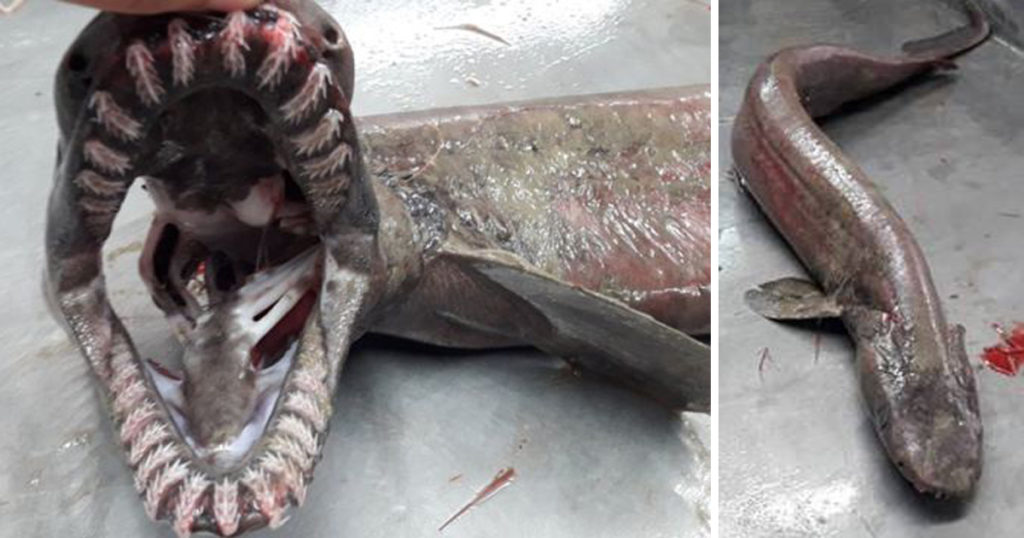
Images: IMPA/MINOUW Project
Cryptid Creatures With Real Potential
-
The Jersey Devil
The Jersey Devil, a.k.a. the Leeds Devil, is one of the more popular cryptids of modernity, appearing to thousands of residents, since its first official recording throughout several New Jersey towns in 1909. Scores of people in Trenton, Woodbury and Swedesboro reported a giant winged creature flying through the night, emanating a horrible scream. But as it turns out, Native American tribes in the area had been seeing the Jersey Devil centuries before.

One of the old wives’ tales of the devil comes from a woman named Mother Leeds, who became pregnant with an unwanted 13th child, whom she cursed. The child was born normally, but then became a horrendous monster. To this day, it resides in the Pine Barren forests, over a million acres of land preserved on the state’s coast.
Described as a cross between a bat and a horse with a long spaded tail, the Jersey Devil has terrified residents of the state, who claim to have found maimed animals and other birds after hearing its cry. Some have written it off as a large bird of prey or a certain type of crane, but others say it is a surviving Pteranodon, a pterodactyl from the Cretaceous period.
Enter the hammerhead bat, a.k.a. the Big-Lipped Bat. The hammerhead bat falls into the megabat category which are exactly what you think they are – massive bats. Hammerhead bats can be found in mangroves, swamps, and forests at lower elevations, usually in Africa. Could the Jersey Devil be an invasive, or transported, Hammerhead bat population that established a home for itself in the Garden State? Ok, so it’s not a new species, but it would validate thousands of local residents’ sightings.

-
The Orang Pendek
Sumatra’s apeman cryptid, the Orang Pendek is thought to possibly be distant human relative known as Homo floresiensis, sometimes referred to as the real-life hobbit.
In the Indonesian language, Orang Pendek translates to “short person,” and it is believed to be an undiscovered primate species, that could potentially be of the genus Homo. Over the years there have been a number of Orang Pendek sightings by travelers, locals, and researchers who have come in search of the cryptid or stumbled upon it by chance.

Image: bigfootbase.com
The most common characteristics confirmed by these numerous sightings depict the Orang Pendek standing between 30 and 60 inches in height, or about 2½ to 5 feet tall. These cryptids are described as being covered in golden, brown, or grey hair and are bipedal, walking erect in the same manner as humans. But what’s even more bizarre is that they are said to have human-like facial features, differing noticeably in appearance from monkeys.
-
The Megalodon
Not just because they’ve recently made a Hollywood sci-fi horror about it, but the chance that a Meg could exist might be better than other cryptids who call the ocean their home. First off, the Megalodon actually existed as recently as 2.6 million years ago during the Early Micoene period, to the end of the Pliocene. It was essentially like a Great White Shark, but two to three times larger. It wouldn’t be too hard to imagine a surviving species of shark with deep-sea gigantism twice the size of a Great White. In fact, there are other sharks that live at significant depths, including the Goblin Shark and the aforementioned Frilled Shark.

-
Bigfoot
Almost every culture has its version of Bigfoot; in North America it’s Sasquatch, the Chinese have the Yeren, in Nepal, it’s the Yeti, in Australia it’s the Yowie, and in just about every other region of the world you can find a regional ape-like cryptid.
So where are the hard photos and video evidence? There isn’t really a good answer to that question, as Bigfoot is probably the most elusive cryptid there is. But why would so many disparate cultures describe the same type of creature over the course of centuries?
Bigfoot is by far the most popular cryptid while also the most divisive, so we’ll leave it to you to decide. Are you a believer?

5. Lake Monsters
The Loch Ness Monster is the most widely known example, but when one discovers just how many different alleged lake monsters exist throughout the world, it’s possible there’s some validity to these sightings.
On the border between Canada, Vermont, and New York lies Lake Champlain, a 107-mile-long freshwater lake, where residents have reported sightings of a creature, nicknamed “Champ,” or “Champy,” that resembles a Plesiosaur. One of the best sightings (here), was reviewed by FBI forensic analysts and described as legitimate. In the video, one sees the creature’s neck, or possibly its fin, as well as a large torso floating just below the surface.
Other lake monsters include Patagonia’s “Nahuelito,” the Leviathan in Sweden’s Lake Storsjön, British Columbia’s Ogopogo, and of course Nessie. Africa has several of its own, as does China, New Zealand, and Turkey. These aquatic mammoths are a global phenomenon.
If a lake monster existed it might possibly be a species of dinosaur known as the Elasmosaurus, a long-necked Plesiosaur that inhabited North America during the Late Cretaceous period, about 80 million years ago. Fossilized skeletons of these behemoths have been discovered throughout the United States and can be viewed in museums, including the Rocky Mountain Dinosaur Resource Center.

Which of these cryptids do you think could be real?
Watch this episode of Beyond Belief with the CryptoHunter, John Rhodes, explaining his search for Earth’s rare cryptids:
Countless Bigfoot Sightings in Colorado Tracked at Sasquatch Outpost

If you perform a Google search for the term “Bigfoot” or “Sasquatch,” on any given day it’s likely you’ll find at least a few articles published within the past week. Sasquatch has become so ingrained in our culture, arguably more than any other cryptid, to the point that if it somehow isn’t real, we’ve practically willed it into existence.
Beyond its cultural acceptance, there’s actually overwhelming evidence of the reality of such a creature that spans centuries of sightings and lore throughout myriad cultures. Jim Meyers, a professional Sasquatch seeker and owner of the Sasquatch Outpost in Bailey, CO, cites the fact that nearly every Native American tribe has its own epithet for Sasquatch.
The Navajo call it “Ye’ Iitsoh,” meaning “Big God”; the Cherokee call it “Ketleh-Kudleh,” meaning “Hairy Savage”; and the Lakota-Sioux call it “Chiye-Tanka” meaning “Big Elder Brotha.”
Often, Native Americans refer to Sasquatch as another tribe or another people, rather than a species of ape or animal, Meyers says. And this near-universal acceptance of such a creature by indigenous peoples who have inhabited remote areas of the US, centuries before its modern development, is one of the most compelling pieces of evidence for the existence of Sasquatch in his opinion.
Though Sasquatch has assimilated into our modern mythological zeitgeist, it can be found in a number of cultural traditions across the world—on nearly every continent, in fact.
Known as the Yeti, Yeren, Yowie, or the pejorative Abominable Snowman, tales of a large, hairy bipedal creature can be found in Australia, Asia, Europe, and both Americas. Interestingly though, Meyers says he’s not familiar with any instances of Sasquatch sightings in Africa, which is also where he lived much of his life.
Meyers grew up in Africa, as his parents were missionaries—a career path he would follow in his adulthood. Having moved to Kenya at age 11, he went to boarding school before attending college in the US. Feeling a desire to continue his parents’ work, Myers would spend another 20 years working as a missionary in Senegal, followed by a decade spent in France. Eventually, he returned to the states and settled in Bailey.
While he was always fascinated with Bigfoot, ever since he saw “The Legend of Boggy Creek” as a kid, Meyers said it wasn’t until a local businesswoman in Bailey recounted a very credible sighting she experienced in the area. Shortly thereafter, Animal Planet recorded an episode of Finding Bigfoot in Bailey, adding to Meyers’ interest, and the rest was history…
Searching for a new avenue of business to pursue, and hearing multitudes of stories and eyewitness sightings in the area, Meyers decided to open a Sasquatch museum in his small Colorado township in 2014. It’s now become a tourist hotspot with over 36,000 visits.
At the Sasquatch Outpost, Meyers has curated his ongoing research into the Sasquatch Encounter Museum where one finds recordings of the creature’s vocalizations, examples of the ways in which it bends, and snaps tree branches, and plaster casts of its footprints.
One of those casts happens to be from the most famous and credible Bigfoot sighting of all time: the Patterson-Gimlin film from 1967. While some skeptics claim the clip has been debunked and a deathbed confession of a hoax was made, Meyers is quick to correct that as a fallacy, pointing out that he’s talked with Patterson’s wife who said he maintained the veracity of the film up until his death.
And if that weren’t enough, Meyers has also kept a map of various levels of Sasquatch sightings and interactions people have reported experiencing throughout Colorado at the Outpost. On the map are various colored pins based on the type of encounter experienced: red denotes a visual sighting; yellow indicates tree breaks and bends; green indicates a vocalization or tree knocking; blue identifies a rock or item thrown at someone.
If you’ve had a Bigfoot encounter in Colorado, you may be able to contribute to this growing map of over 300 encounters. In the meantime, check out Meyers in the latest episode of Beyond Belief.


